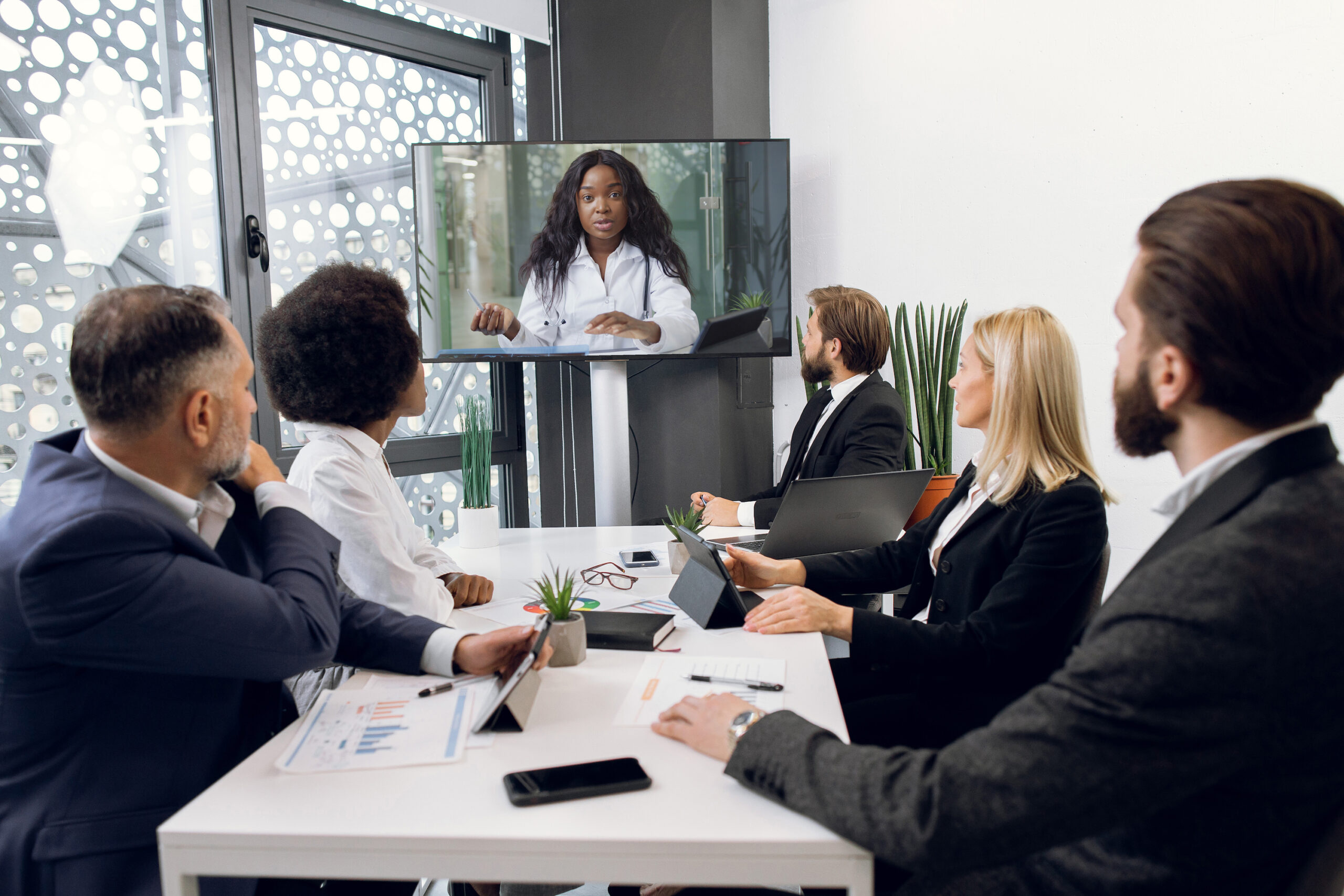According to a report produced by the World Health Organization (WHO), around 1.3 billion people – or 16 percent of the world’s population – are living with significant disabilities. This makes it crucial that we adopt systems that make our webinars accessible to the greatest proportion of the population.
Webinar hosts dedicate a lot of time and effort when creating webinar content, marketing it to potential attendees and practicing the delivery to ensure they convey their message to the audience in the best way possible. But despite how good their speech is, not all of their attendees may be able to hear or understand them.
Society is comprised of people from diverse backgrounds, ethnicities, gender identities, sexualities, races and religions, as well as physical and mental capabilities. As part of a diverse society, webinars should ideally be accessible to as many people as possible, including those who are living with hearing disabilities.
Xtalks recognizes the importance of webinar accessibility and has implemented live captions for our clients who want to address this issue.
What is Real-Time Captioning for Webinars?
Captioning is the act of adding captions (text that explains what is happening on-screen, including dialogue) to video content. Just as these captions are important for other types of media, adding captions to your webinar can improve accessibility and help you engage with a wider audience.
A study from 2006 suggested that out of 7.5 million TV viewers in the UK who use subtitles, only 1.5 million were deaf or hard of hearing. This suggests that 80 percent of TV viewers used closed captions for reasons other than hearing loss, and that closed captions benefit many more than just those who require them for accessibility.
I do not have a hearing impairment, but I leave the captions on when I watch TV to help me understand different accents. Since our webinar speakers – and attendees – come from all over the world, it’s important to ensure that your presentation can be understood by a global audience. Each country and region have a different dialect/accent, so real-time captioning is there to ensure your webinar’s message is not lost.
For the most part, prelingually deaf people who learn American sign language (ASL) as their first language always prefer to see an ASL (or equivalent sign language) interpreter on-screen over closed captions; however, the same isn’t true for people who suffer hearing loss later in life.
So, What’s the Big Idea?
I worked for several years at the Canadian Hearing Society, an industry-leading provider of services, products and education that empowers individuals in the deaf and hard of hearing communities to overcome barriers to participation. During this time, I saw the challenges they faced, and how captioning and/or an ASL interpreter helped them get the information they needed to lead a rich, full, independent life.
IDEA is an acronym for Inclusion, Diversity, Equity and Access. IDEA highlights efforts toward underserved communities by addressing structural inequities. So, yes this is a big idea.
Organizations that embrace IDEA can foster cultures that minimize bias and recognize and address systemic inequities, which if unaddressed, create disadvantages for certain individuals or groups.
A report titled “Inclusion, Diversity, Equity & Accessibility (IDEA) Good Practices for Researchers” by the Canadian Commission for UNESCO defined IDEA as the following:
“Inclusion: Is ensuring all individuals are equally supported, valued and respected.
Diversity: Is the wide range of attributes within a person, group or community which makes them distinctive. Dimensions of diversity consider that each individual is unique and recognizes individual differences including ethnic origins, gender (identity, expression), sexual orientation, background (socio-economic status, immigration status or class), religion or belief, civil or marital status, family obligations (i.e., pregnancy), age and disability.
Equity: Is the fair treatment and access to equal opportunity (justice) that allows the unlocking of one’s potential, leading to the further advancement of all peoples. The equity pursuit is about the identification and removal of barriers to ensure the full participation of all people and groups.
Access: Is the provision of flexibility to accommodate needs and preferences, and refers to the design of products, devices, services, or environments for people who experience disabilities. It can also be understood as ‘a set of solutions that empower the greatest number of people to participate in the activities in question in the most effective ways possible.’”
Webinar Accessibility Breaks Down Barriers to Participation
Here at Xtalks, we want to deliver high-quality, informational events that break down barriers to participation and empower individuals to have an enriching experience attending our webinars. Webinar accessibility with live captions makes it possible for people with hearing disabilities to participate in virtual events.
Webinar accessibility is not only ethical but also a sound business practice. Accessibility means that all people can perceive, understand, navigate and interact with electronic information and be active, contributing members of the digital world.
When creating your webinar content, ensure you have considered various impairments – including visual, auditory, physical, speech, cognitive and neurological – when implementing accessibility measures.
Today, webinar accessibility is key to creating a more inclusive society. Xtalks is celebrating 20 years of offering best-in-class webinar production, marketing and content. Xtalks wants to continue to be the leader in webinar production by implementing live captions for our clients to utilize and ensure people with hearing disabilities/impairment are included.
After all, deafness and hearing loss are widespread and found in every region and country. Over 1.5 billion people – nearly 20 percent of the world’s population – have hearing loss, and 430 million of them have disabling hearing loss. It’s hard to know who in your audience might be struggling to understand your presentation if you don’t build it with accessibility in mind.
Live captions overlap between accessible design and general webinar best practices which Xtalks’ client services representatives and our webinar moderators will provide. Xtalks is proud to be the leading producer of webinars across the industries regulated by the US Food and Drug Administration (FDA). Xtalks connects practitioners with quality content in the most accessible and interactive way possible. Our online communities are knowledge hubs and information exchanges, enabling industry professionals to make better, more informed decisions. Adding captions will ensure all of our audience members will understand and enjoy the live presentation.
Every year, tens of thousands of industry professionals from life science, food, healthcare and medical device industries attend our live webinars and access our recorded content. Now we can add captions for our clients who want to ensure that they are inclusive.
Our client services manager, Karen Lim, who has been working at Xtalks since its inception 20 years ago, said, “This is a giant step toward increasing accessibility for our clients who want to ensure their webinar content is easily understood by all attendees.” Karen stated that we can also provide an ASL interpreter and Xtalks can provide captioned translations for translation into several languages for greater access to a global audience.
Karen’s most recent success story with open captioning was a four-day webinar series that also included an ASL interpreter.
“It was imperative for my client to address IDEA and ensure that all members of the audience have access to learn,” said Karen.
Xtalks Provides ASL Interpreters
Xtalks can provide an ASL interpreter for your webinars. An ASL interpreter for a webinar translates the spoken content of the webinar into sign language so that it can be understood by individuals who are deaf or hard of hearing and who use ASL as their primary language. The ASL interpreter will do the following:
- Listen to the spoken content of the webinar through headphones or other audio devices.
- Translate the spoken content into ASL using a combination of hand gestures, facial expressions and body language.
- Convey the translated content in real-time to the viewer(s) who are deaf or hard of hearing.
- Interpret questions and comments from the audience during the Q&A session, allowing deaf or hard of hearing individuals to participate fully in the webinar.
- Maintain neutrality and impartiality, interpreting everything that is spoken, without adding any personal opinions or biases.
Our ASL interpreters for webinars are trained professionals who are skilled in both ASL and the language being spoken during the webinar. By providing ASL interpretation for webinars, individuals who are deaf or hard of hearing can participate fully in the webinar and access the same content as hearing viewers.
Methods for Improving Webinar Accessibility
Live captioning is not perfect, and errors do occur, but the risk of inaccurate captions can be mitigated by using Xtalks’ post-production services to improve the accuracy of the automated captions. Xtalks’ post-production group can help improve the quality and impact of a webinar video, making it more engaging and effective for viewers.
Our post-production services will also take care of any other unplanned mishaps. For example, you pressed the advance slide too many times or you accidentally turned off your microphone or webcam. All of these can be remastered in our post-production.
Post-Production Services
At Xtalks, we ensure that the final webinar recording is pristine. Post-production of our webinar videos typically involves several steps to prepare the recorded webinar for distribution and viewing. These steps may include:
- Editing: The recorded webinar may need to be edited for content, timing and visual quality. This can include cutting out sections that are not relevant, adding transitions and color correction.
- Enhancing audio: Audio quality checks are always done in advance of a live production. However, in rare occurrences, audio quality can degrade during the live event for numerous reasons. Xtalks’ post-production services can help by using noise reduction, compression and equalization, among other audio-enhancing techniques to improve the clarity of the sound.
- Removing background noise: This can help to remove unplanned noises such as from garbage trucks, dogs barking, firetrucks or ambulance sirens.
- Adding or removing titles and graphics: Title cards and graphics can help to introduce the topic, break up the video into sections and emphasize key points or remove slides or parts of the presentation you did not want to include in the final recording.
- Exporting: Although all webinars continue to acquire post-event registrants through streamed recordings on xtalks.com, the final video may can be used separately by our clients by exporting to a suitable format for distribution and viewing, such as MP4 or MOV.
Once your webinar is posted, it will appear in the on-demand sections of xtalks.com. On-demand recordings allow any member to catch up on webinars that they may have missed as well as a second chance to review any webinars that they attended. Once the attendees register for the live webinar, they will automatically receive the archive link via email and the webinar is placed in the “My Past Webinars” section of their member profile. If an attendee did not register for the live event, they can register to watch the archive after the live session.
Captioning is No Longer Just for the Hard of Hearing or Deaf
We know that captions help people who are deaf or hard of hearing, along with those who have cognitive and learning disabilities who need to simultaneously see and hear the content to better understand it.
But did you know that having captions on your webinar can also assist people who do not have a disability?
Some attendees may be en route to a meeting, or they just might be attending your webinar in a shared, noisy environment. Alternatively, the attendee could be viewing the webinar in a silent environment where they cannot turn on sound. Having captions will assist their viewing experience as they will still be able to follow along.
Having live captions will also make it easier to understand for those whose first language is not English, or who are less fluent in the language spoken. With live captions, there may be people in the audience who will find it easier and quicker to follow and understand.
Please note that there are several different types of captioning. At Xtalks, we provide open captioning during the live event. Closed captions can be turned on or off within recorded webinars with the click of a button. Open captions are different from closed captions in that open captions are part of the live event itself and cannot be turned off.
Xtalks Provides Translational Services
If you are looking to target a certain region or country where English is not the first language, Xtalks can provide moderators for live events in many languages, can provide subtitles or captioning translation for recorded webinars as well as dubbed audio in several languages.
Overall, multi-language support via moderators or subtitles and captioning translation can help to make webinars more accessible and comprehensible to a wider audience by providing a plethora of written or audio options for the webinar.
Reach a Global Audience
Over the past decade, webinars have arguably become recognized as the best way to reach and engage an audience. At Xtalks.com, marketers from life science, food and medical device industries have truly embraced our webinars as a tool of choice.
Let Xtalks be the extension of your marketing efforts. Reach out to our outstanding customer service team to start the dialogue on why you should host a Xtalks webinar and how we can help you to reach your target audience anywhere in the world.












Join or login to leave a comment
JOIN LOGIN